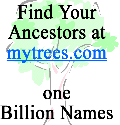There
are 6 tab lines representing 6 strings on the guitar. (The 1st
string is the thinnest, and the 6th string is the thickest)
They are as follows:
E-----------------------------
String 1
B----------------------------- String 2
G----------------------------- String 3
D----------------------------- String 4
A----------------------------- String 5
E----------------------------- String 6 |
When a number is placed on one of the lines, it indicates the
fret location of note for example,
E-----------------------------
String 1
B------4---------------------- String 2
G----------------------------- String 3
D----------------------------- String 4
A----------------------------- String 5
E----------------------------- String 6 |
This
means to play the 4th Fret on the 2nd string
E-----------------------------
String 1
B----------------------------- String 2
G----------------------------- String 3
D----------------------------- String 4
A------0---------------------- String 5
E----------------------------- String 6 |
This
indicates an open 5th string
E---1-------------------------
String 1
B-----------8----------------- String 2
G-------7--------------------- String 3
D---------------2------------- String 4
A----------------------------- String 5
E------------------------12--- String 6 |
This
indicates:
1st Fret, 1st string then
7th Fret, 3rd string, then
8th Fret, 2nd string, then
2nd Fret, 4th string, then
12th Fret, 6th string.
Further
Points To Remember...
 |
Other
letters / symbols used in tabs. |
h
- hammer on
p - pull off
b - bend string up
r - release bend
/ - slide up
\ - slide down
v - vibrato (sometimes written as ~)
t - right hand tap
x - play 'note' with heavy damping
 |
When
you see all numbers in a line one after another |
E---3-------------------------
String 1
B---3------------------------- String 2
G---4------------------------- String 3
D---5------------------------- String 4
A---5------------------------- String 5
E---3------------------------- String 6 |
...it
means you play the entire chord using all strings
 |
When
you see tabs that have "h" |
E--------------------------------String
1
B--------------------------------String 2
G--------------------------------String 3
D--------------------------------String 4
A---------7h9-----------10h12----String 5
E---0--0----------0--0-----------String 6 |
....it
means to do a "Hammer On" from the 7th fret to the 9th
fret and again for the 10th fret to the 12th fret
 |
When
you see other tabs that have "p" |
E--------------------------------String
1
B--------------------------------String 2
G--------------------------------String 3
D--------------------------------String 4
A---------9p7-----------12p10----String 5
E---0--0----------0--0-----------String 6 |
....it
means to do a "Pull Off" from the 9th fret to the 7th fret
and again for the 12th fret to the 10th fret
 |
When
you see other tabs that have "b" |
E--------------------------------String
1
B--------------------------------String 2
G--------------------------------String 3
D--------------------------------String 4
A---------7b9-----------10b12----String 5
E--------------------------------String 6 |
...it
means strike the string 5 on the 7th fret, then bend the note
up so that it sounds the same as the note played on the 9th fret.
Here's
a quick tablature legend to keep on file...
|
|
h - hammer-on
p - pull-off
b - bend
pb - pre-bend
r - bend release (release immediately if no number after r)
/\ - slide into or out of (from/to "nowhere")
s - legato slide
S - shift slide
<n> - natural harmonic
[n] - artificial harmonic
n(n) - tapped harmonic
~ - vibrato
tr - trill
T - tap
TP - trem. picking
PM - palm muting
\n/ - tremolo bar dip; n = amount to dip
\n - tremolo bar down
n/ - tremolo bar up
/n\ - tremolo bar inverted dip
= - hold bend; also acts as connecting device for hammers/pulls
<> - volume swell (louder/softer)
x - on rhythm slash represents muted slash
o - on rhythm slash represents single note slash
|
|

